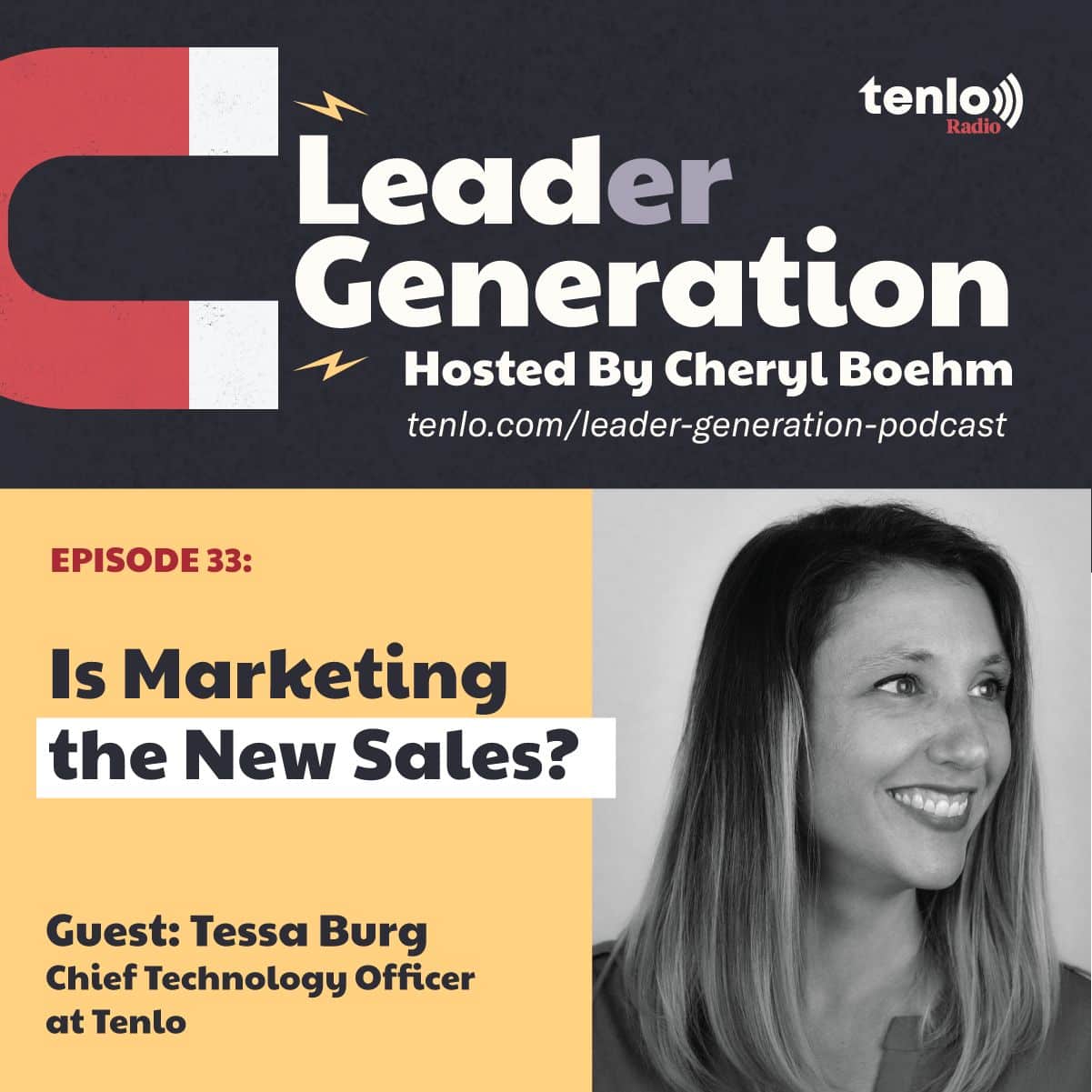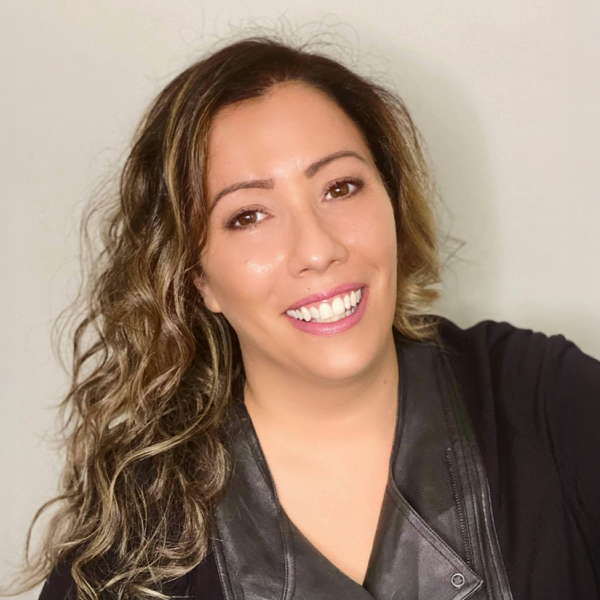Marketing vs Sales
Panel Discussion
What does the phrase “marketing is the new sales” mean?
Marketing and Sales both play important roles within a company. Traditionally, Marketing helps get potential customers interested in products and services, while Sales turns those leads into paying customers.
However, the line between Marketing and Sales is beginning to blur.
Thanks to digital marketing channels, many prospects are making buying decisions without talking to Sales. Marketing channels are now sales channels. Marketers impact sales numbers like never before, inspiring the phrase “marketing is the new sales.”
Is Marketing replacing Sales?
Different customers buy in different ways.
Digital channels allow marketing to influence prospects and convert them into buyers without a human touchpoint with Sales. However, some prospects still value a Sales relationship.
Marketing is not replacing Sales. It provides opportunities to grow your business by connecting with people who want a digital buying experience.
How can marketers improve a digital buying experience?
Content. No matter where they are in the buyer journey, B2B prospects are looking for information. Whether it’s delivered through video, whitepapers, articles or infographics, content provides the answers prospects need to narrow choices and make a purchase decision.
But don’t forget emotion. Decisions aren’t based purely on logic. Use content to connect with prospects on a human level. It’s about likeability … people want to do business with people they like.
Cheryl Boehm: Hello, and welcome to Office Hours. This is our regular gathering, where we get together a panel of marketers to talk about some of the trends that we’re seeing or different hot topics that are impacting the marketing industry.
Cheryl Boehm: So, joining me today from the Tenlo team, which I want to call out is now part of Mod Up. So I should say the Mod Up team, is Tessa Burg and Jen Plona. And we also have a very special guest today, this is a client of ours, and we’re excited to have her and that’s Linda Owens from Nestle Professional. So welcome everyone.
Linda Owens: Thanks, Cheryl.
Tessa Burg: Hello.
Jen Plona: Thanks, Cheryl.
Cheryl Boehm: So, the topic that we’re discussing today is, is marketing the new sales. And Tessa talked about this a little bit on a recent episode of the Leader Generation podcast. And we had such a high interest in this topic that we wanted to give it a little more love and talk about it just a little bit more. So Tessa, can you just give us a short overview of what marketing is the new sales means?
Tessa Burg: Yes. So actually this topic was inspired by Linda herself, she said it during a presentation we were giving and it really was with me because when the pandemic started and as we were working through the different challenges, I’ve definitely felt it, I feel like Linda and her team and a lot of our other clients felt this, this increased pressure that marketing had to start delivering real customers and delivering them more efficiently.
Tessa Burg: So, our sales team were grounded. You know, they couldn’t rely on the same type of in person relationship building that they had been doing. And we had to get creative really quick on how do we become more efficient in creating those relationships virtually and what tools in the toolbox are best for doing that?
Tessa Burg: So, that’s where the topic came from. And now that we are two and a half some years into this journey, you know, we have a lot of learnings and it hasn’t slowed down, the pressure on marketing, the requirement to target the right people and target ready to buy buyers right now still exists.
Cheryl Boehm: So, Linda, since you are the inspiration behind this topic, when did you start seeing some of those lines between marketing and sales blur? And are you still seeing that today?
Linda Owens: Yeah, I think we are always, every single one of us, no matter what company we work for, we are always supporting sales in some form of manner, right?
Linda Owens: So, it’s always a priority for us is that we are impacting in different ways that sales number. I do think there is more of an opportunity now for us to make an even more significant impact because our digital channels have kind of blurred a lot more into sales channels, right? A lot of times we see that people are making a lot of buying decisions without really talking to someone else. You know, they may just research and quickly hit by. You’re seeing things like Instagram stores popping up. We have sales happening on the TikToks of the world, in social media, but also in just any type of website these days, or even on apps.
Linda Owens: So, there’s sales opportunities that is happening today that has nothing to do with talking to a salesperson, but it’s still sales. It’s still an end-to-end sales methodology but it’s more so in the digital space or in the online space.
Linda Owens: So, one thing that has happened for me when viewing the industries right now is that COVID expedited this a little bit more to make this much more prevalent, much more important for many companies across multiple industries. And that’s what I’m seeing at the moment. And that’s what inspired marketing is the new sales.
Cheryl Boehm: That’s really interesting. And Jen, I’d love to get your or perspective because you work with a lot of different clients and you hear a lot of their challenges that they’re facing. Is this something that a lot of different clients are coming to you with concerns about or trying to figure out how to really seamlessly blend those lines?
Jen Plona: Yeah, absolutely. So when we think about how best to engage a potential prospect and thinking about that full sales funnel, we wanna make sure that we’re thinking about it from top to bottom, right? And so everyone’s at a different stage in their buyer journey, whether they think they have a problem, they know they have a problem and they know exactly what that problem is, or they just need a solution for that problem.
Jen Plona: So, what we see from a lot of our customers in the last few years, and especially since the pandemic and things like that is that we need to make sure that marketing is there to support the buyer in whatever stage of their buying journey that they’re in. So, whether that’s giving them some information on educational information or giving them some real specific call to action that’s going to allow them to talk to someone on a sales team or make that more formal connection. It’s become really important, and we see especially across the B2B space that a lot of our clients are really in need of that, and want marketing to support it.
Cheryl Boehm: And it’s interesting that you bring that up and B2B because I know in the past, it was more common for marketing to really dominate the B2C space and sales to more dominate the B2B space. But expectations are changing and B2B, they’re expecting more of that B2C experience. And so I’m wondering Linda, are you, as these lines start to blur, are you seeing that marketing is now being held more accountable for contributing to sales and revenue growth and profitability specifically in B2B?
Linda Owens: Yeah, I think all of us are consumers regardless of if we’re buying for a business or if we’re buying for ourselves, right? So that behavior, once they go online is still the same regardless of the channels and the items that they’re buying. So, universally that I feel is true, which helps put things into perspective on the B2B side is that yes, to an extent, perhaps there’s much more involvement on the marketing side. I don’t think there is as much more like pressure to accomplish certain initiatives as much as there’s more opportunity to do more, right? So, it’s a totally different thing because we have more doors opened for us now to actually influence someone in a digital way. And it could be purely digital, there could never even ever be a human touchpoint along the way, as long as that customer is willing to have that, right. Now if a customer wants an actual conversation to happen, we need to make sure that we are offering that to them. So that omnichannel approach is super important regardless because you may have 2% of your customer base who still wants that, and you need to make sure that it’s available instead of just saying like, no, we’re just gonna go all out on digital. So having that right mix so that you are opening more doors to convert customers into sales is crucial.
Tessa Burg: Yeah, and I’m just gonna answer that, the one thing, when we were talking about this topic, there was a concern raised by another client, are we cannibalizing what sales used to be? Like, they work very much in hard goods and manufacturing and like if we start selling online, we’re just replacing what the sales people do. And what we found is it’s actually just different types of customers buying different ways. So if you’re able to influence and get more of those people who want that digital buying experience, your salespeople still very much played a role for those customers who really need that relationship, really need someone they know and trust who’s going to be making recommendations and we can do that on digital. You can create comparison charts, you can do all types of content, but that’s going to be for that different type of buyer. So opening up these channels to Linda’s point is really creating opportunity and growth. It’s not about like, are we replacing sales? It’s like, no, we are selling no, and we’re selling to customers who wanna consume information and buy in that way.
Jen Plona: Yeah, and Tessa.
Linda Owens: Oh, go ahead, Jen.
Jen Plona: Oh, no, I was just gonna say that’s a really great point. And I think that, one of the things that is really important for our clients and companies to understand is really leveraging that martech stack the best way possible, right. Leveraging the various platforms they might be using, how do they all need to work together in order to bring that omnichannel approach? So that way the communication to individuals is there however they wanna consume it.
Cheryl Boehm: Linda, did you have another point that you wanted to?
Linda Owens: I forgot what I was gonna say, Cheryl, so you can move on to the next question.
Jen Plona: Sorry.
Linda Owens: No worries.
Cheryl Boehm: That’s all right. So we’ve talked a little bit about new opportunities, so what can marketers offer customers that maybe we haven’t been able to in the past based on these new purchase habits and ways of buying that maybe do not include face to face contact or as much integration with sales, and Jen, if you don’t mind, I’d like to start off with you on that.
Jen Plona: Sure, absolutely. So, I don’t know that it’s necessarily new, but I think it’s about thinking about it in a new way. What content, right? Content is just so extremely important for those individuals that wherever they’re at in their buying journey, they’re able to consume the type of information they want in the format that they wanna consume it. So whether that’s along white paper, that’s a really interesting read, whether that’s an infographic, some type of video content, a quick post on LinkedIn or Facebook or one of the other social platforms, all of those things become really important. So one of the things we work with our clients on is how do we take that content and leverage it the best way possible. We wanna really make content work hard for us based on that omnichannel approach. And so you don’t need a crazy amount of content but repurposing content and making sure that it’s really connecting with the end user in their, to answer where they’re at in their buying journey is really important.
Cheryl Boehm: That’s so true. Obviously I am a big proponent of content. So Linda, how about you? Beyond content, is there any different opportunities or anything that maybe marketers should start doing or maybe stop doing in order to, for marketers to start supporting sales more in taking a more active role?
Linda Owens: Yeah, I think at the end of the day, regardless of what channel we end up purchasing from, we buy emotionally and then we make that justification with logic, right? So emotion is so important in this buying process. So whether it’s a human connectivity, to Jen’s point or it is an online digital connectivity, there still has to be a humanness to it, right? So whether it’s creative or content that Jen brought up, that we’re being more mindful of creating and popping up all over the place. If it doesn’t have that emotion connectivity, I don’t think anyone’s going to buy. So, in the same way, if you don’t have a good relationship with your customer and you’re a salesperson, I don’t think they’re going to buy from you. It’s that likability factor, right? So I think that’s crucial regardless of the platform and we need to be very mindful of that as well. Anytime we are making sure that our products are positioned whether it’s online or offline.
Cheryl Boehm: Yeah, that is so true. One of our coworkers, always says that people like working with people they like, and I think the same thing goes with that buying relationship. That’s so important. People care about who they purchase, whether it’s products or services, who are they purchasing from and what those values and what that company cares about. So that human element is just critical. Tessa, do you have any thoughts about what marketers may need to start or stop doing to take advantage of some of the opening doors and new opportunities?
Tessa Burg: I think one area that B2C marketing is ahead of us on is optimizing campaigns across all the channels and measuring the impact of demand generation, which is the use of content to influence people all the way down to sales. And since there have been divisions between marketing and sales and sales, they have very aggressive goals so they’re doing what they gotta do, and marketing’s always trying to keep up and support but we do need to start to marry across those platforms so that we can see, hey, are we creating demand and awareness with the right people? They’re adding value to sales. And it’s really hard when we can’t kind of tie that bow. I think the stop doing is stop just seeing yourself as creating pamphlets and promotional materials and trade show stuff for the sales team. There really is an opportunity to reach a different type of buyer and think about if your response rate at a trade show is 15%, which is awesome. So you contact those people that are driving them to the trade show booth, I mean, that’s amazing, but that means that you’re still missing, 70, 80% of the audience. So start looking at, but what about everyone else? So I feel like sometimes we sit on, we get awesome results from things we’re used to doing and we’re seeing those things come back but you’re still missing, there is a buyer that became very active in the pandemic who wants to be online and wants to be influenced online. So yeah, make sure you’re connecting whatever you’re doing to support sales to, but how do I reach the rest of that audience?
Cheryl Boehm: Yeah, that’s some great advice. We are just about out of time. Are there any last thoughts before we close out this episode?
Linda Owens: I can make a comment. When I was thinking about this topic, initially, I was like, you know what? We were all born salespeople, but somewhere along the line, we got influenced by our environment, lost our confidence and we were like, no, we’re gonna go into marketing or we’re gonna go into operations. So, HR, I mean, and I remember that from being a child, right, to also having a son myself of like, he is constantly negotiating with me, bothering with me, convincing me that he’s going to do this to get that, right? So, it’s just that ability to take that into a digital world is super available to us now as opposed to before, like I couldn’t have this conversation five years ago. Couldn’t have this conversation maybe even four years ago, right, because that is just so much opportunity for us and a different way of thinking, a different way of embracing everything that’s available to us right now because the customer mindset has changed. And by change, I mean, they’ve become more open to different ways of buying. And for us to be able to influence and take them to that next step in closing the sale and me, because I’m a digital person, when I’m able to do that digitally, of course, I’m like, yes, right? Which is exciting. So, showing that end to end success in a digital world is important for every single industry. And I think we can get there, there’s a lot of work to do because like one door opens and then another door opening and another one, I’m like, okay, which one do I focus on right now? So, I’m excited about what is going to be coming up for us in the next five years in the digital space right now.
Cheryl Boehm: That is so great. And I mean, I think that is the perfect ending for this Office Hours. So for everyone participating live, and for viewing this video, if you wanna see more episodes, just go to tenlo.com, you’ll see Office Hours episodes where we talk with panels of marketers. You can also see and hear the Lead(er) Generation Podcast there as well. So thank you everyone for participating, this was a great panel and we’ll see everyone next time.
Jen Plona: Bye, Thanks for having us.
Tessa Burg: Bye.
Linda Owens: Thank you.
Panel Discussion

Guest Panel:
Tessa Burg | Vice President of Technology at Mod Op
Jen Plona | Vice President of Sales & Marketing at Mod Op
Linda Owens | Director of Digital & E-Commerce Strategy at Nestlé Professional
Moderator:
Cheryl Boehm | Co-Host of Lead(er) Generation | Director of Copywriting at Mod Op
Is Marketing The New Sales?

Is marketing really becoming the new sales? Join us as we explore a topic that’s continuing to change modern marketing.
Listen Now

